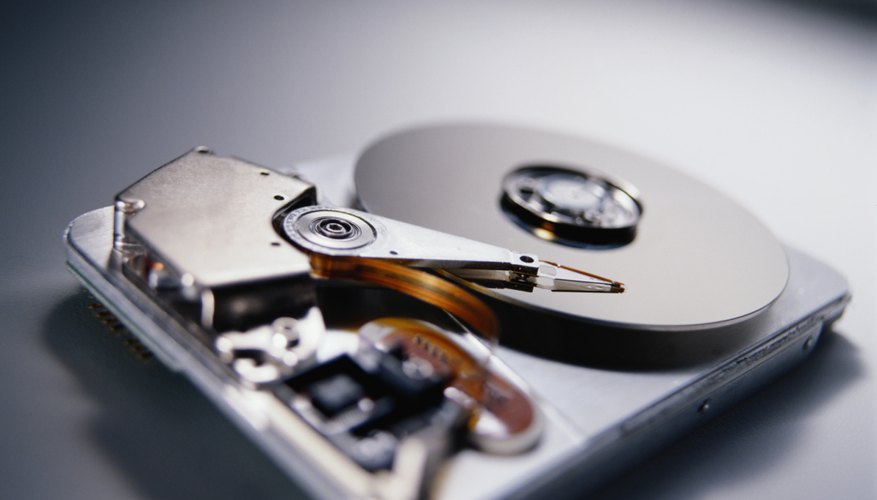Internal computer hard drives and removable media, such as external hard drives and USB pen drives, all use a file system format for storing, reading and writing data. Computers running the Windows operating system typically handle all the main file system formats currently in use, but you may need to format an external hard drive before it will work with your computer. Formatting also offers other benefits, including the ability to delete all the files stored on the drive and erase personal data instantly.
Functionality
External hard drives that you can connect to your computer when you want to store large files often need formatting before you can use them. Formatting configures the hard drive so that your computer's operating system can read and write data to the disk. Some high-capacity external hard drives come already formatted, while others prompt you to format them when you first connect the device to the computer with a USB cable. You may also need to reformat your computer's internal hard drive if you want to troubleshoot system problems by reinstalling the Windows operating system.
- External hard drives that you can connect to your computer when you want to store large files often need formatting before you can use them.
- You may also need to reformat your computer's internal hard drive if you want to troubleshoot system problems by reinstalling the Windows operating system.
Compatibility
After formatting an external hard drive, you can reformat it at any time by right-clicking the drive in Windows File Explorer and selecting the "Format" option. Hard drives use two main file system formats -- New Technology File System (NTFS) and File Allocation Table (FAT), which includes FAT, FAT32 and exFAT systems. NTFS works well with other computers, while FAT offers wider compatibility with other devices. For example, you might need to reformat an external hard drive with the FAT system if you want to connect it to a personal digital video recorder's USB port to play stored video files with the DVR. Always check the device or computer's manual or online help documentation to find the recommended file system before formatting an external hard drive.
- After formatting an external hard drive, you can reformat it at any time by right-clicking the drive in Windows File Explorer and selecting the "Format" option.
- For example, you might need to reformat an external hard drive with the FAT system if you want to connect it to a personal digital video recorder's USB port to play stored video files with the DVR.
Security
Formatting a hard drive also wipes it clean of any stored data, which is a useful feature when you want to dispose of an external hard drive, send it away for repair or give it to a friend or colleague. Formatting a drive removes files that you might not want others to see and also deletes any personal data or confidential business information. For extra security, you can also use a third-party file shredder program to overwrite sensitive data on the drive before you format the device. The Windows operating system typically divides up your computer's internal hard drive into partitions, sometimes also known as volumes or logical drives. You can usually format any of the internal hard drive partitions on your computer, except for the one that contains the Windows operating system, which is the "C:" drive on most PCs.
- Formatting a hard drive also wipes it clean of any stored data, which is a useful feature when you want to dispose of an external hard drive, send it away for repair or give it to a friend or colleague.
Space
Because formatting a hard drive also deletes all stored files, formatting is a convenient way to free space on a cluttered hard drive. You won't be able to recover the deleted files after formatting your drive, so ensure you save any content you want to keep by moving it to another computer drive, removable hard drive or cloud-based file storage service. If formatting an internal hard drive partition, also make sure that the drive doesn't contain any essential system files that your computer needs to run correctly. The Windows Disk Clean Up utility might be a safer option than formatting for internal hard drives, because this tool identifies and deletes only unnecessary files that won't affect the way your computer runs.
- Because formatting a hard drive also deletes all stored files, formatting is a convenient way to free space on a cluttered hard drive.
- If formatting an internal hard drive partition, also make sure that the drive doesn't contain any essential system files that your computer needs to run correctly.
